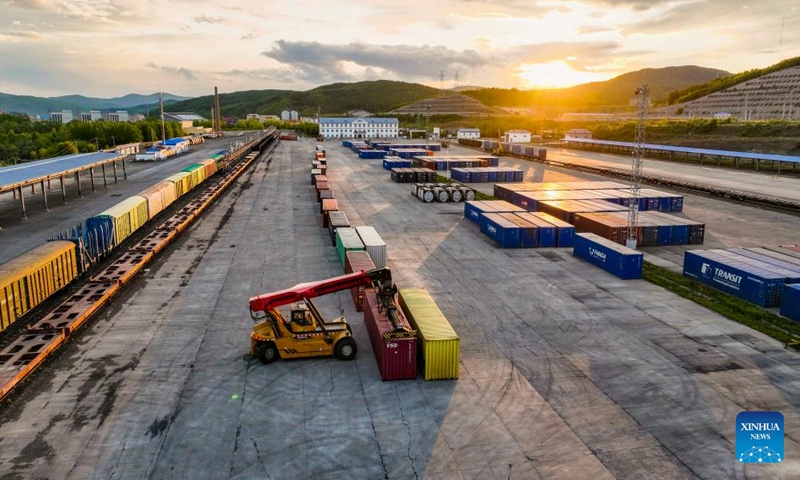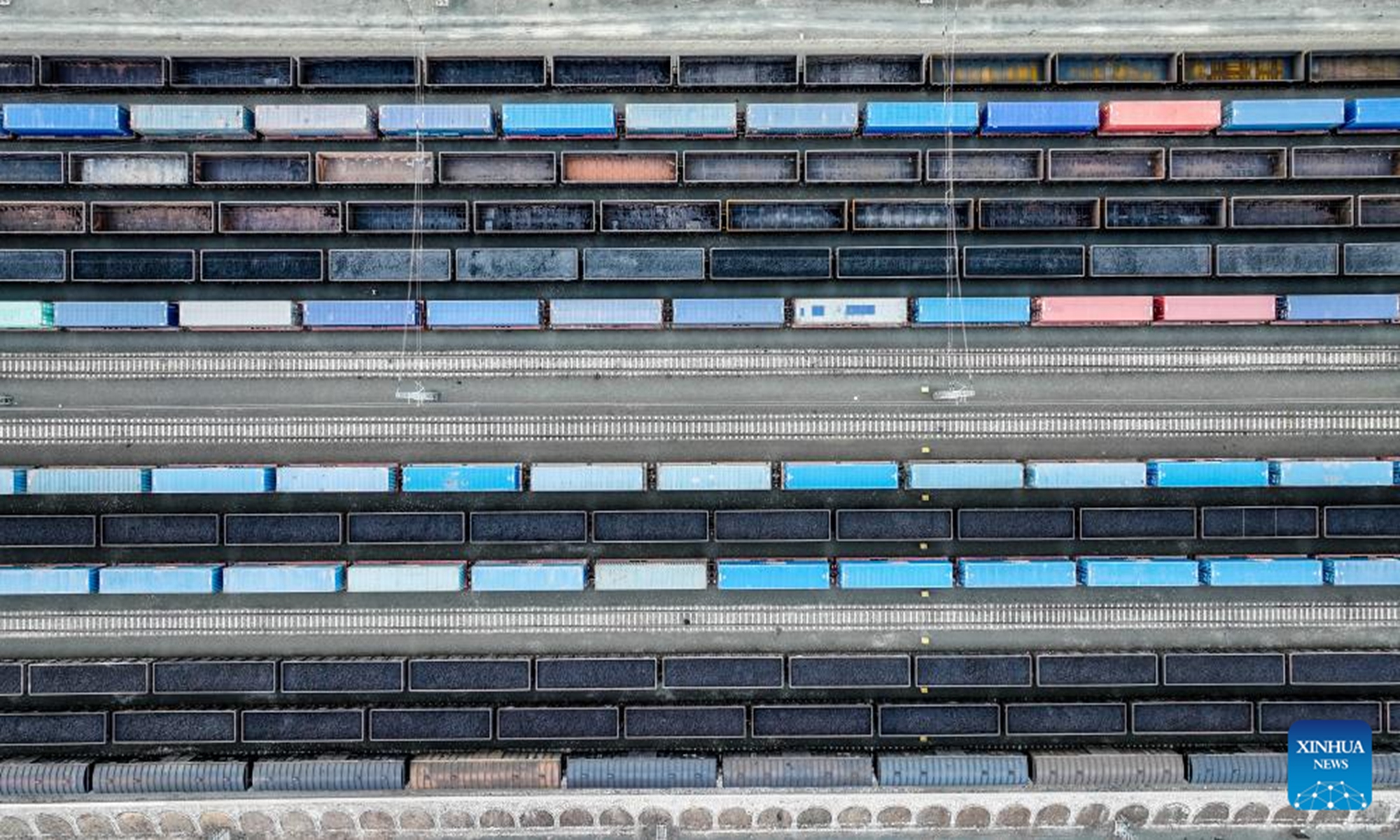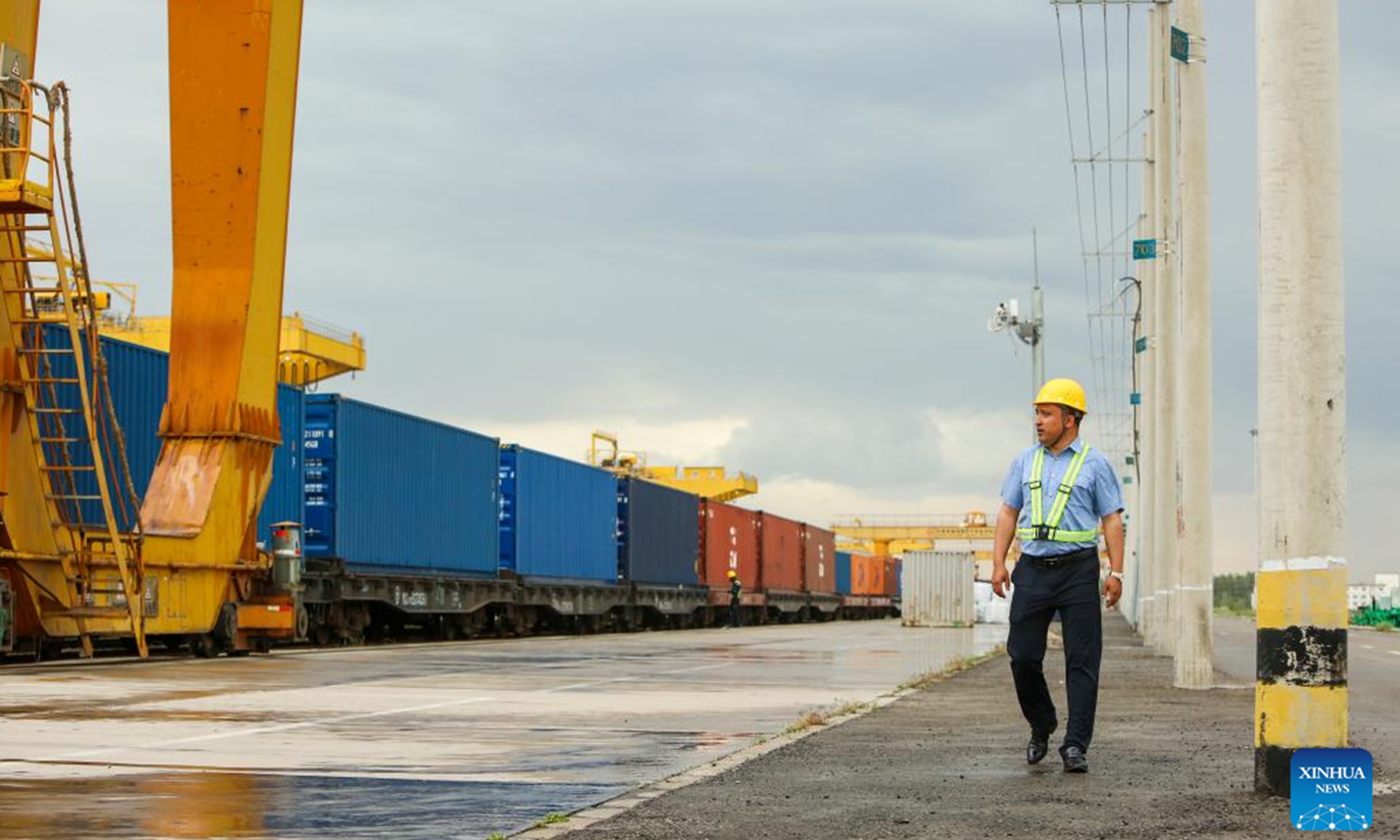
An aerial drone photo taken on May 24, 2024 shows a wheel crane switching container payload at Suifenhe Railway Port in northeast China's Heilongjiang Province. Suifenhe Railway Port is an important port for the operation of China-Europe freight trains in northeast China. Staff members here are trying their best to reduce the average time for loading and grouping of these trains. (Photo:Xinhua)
The number of China-Europe freight trains completed in May reached 1,724, which carried 186,000 standard containers of goods, hitting a new monthly high, the China State Railway Group said.
The number of freight train runs in May increased by 14 percent year-on-year, while the volume for transported goods was up 13 percent, indicating continuously expanding cargo trade between China and Europe, two of the world's major economies.
Chinese enterprises are striving to improve transport efficiency and expand train runs, as the freight trains serve as a stable and safe channel to ensure global supply chains despite global uncertainties.
Amid a range of geopolitical tensions such as the ongoing Red Sea crisis, some enterprises have opted to use China-Europe freight train service to replace sea transportation as a relatively secure and reliable way to avoid potential interruptions and delays, a person in charge of the Yuxinou (Chongqing) Logistics Co told the Global Times.
The freight train runs offer a quicker, more stable service, regardless of different weather and sea conditions. The service bypasses potential maritime transport perils and ensures safe and timely deliveries, the person said.
In May, the cumulative number of China-Europe Railway Express train runs exceeded 90,000, with more than 8.7 million standard containers of cargo valued at more than $380 billion being shipped.
From 2016 to 2023, the annual number of China-Europe freight train runs rose from 1,702 to more than 17,000. The types of goods carried expanded from IT products such as laptops and printers to more than 50,000 different varieties now, including clothing and footwear, cars and auto parts, daily necessities, food, timber, furniture, chemicals and many manufactured goods.
Global Times



